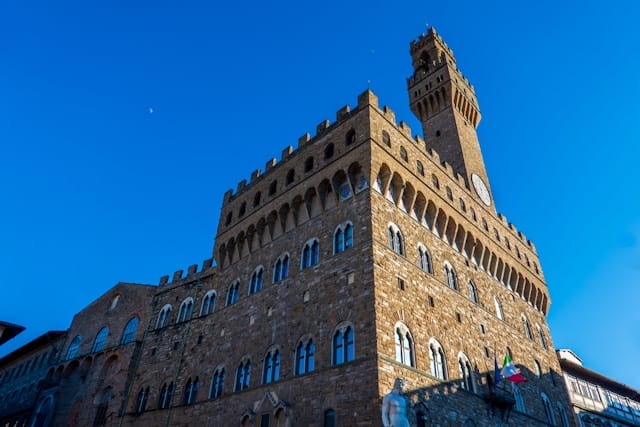Table of Contents
Florence, the cradle of the Renaissance and a quintessential stop on Italy tours, is a city where art and history converge in a vibrant tapestry of culture, architecture, and human achievement. At the heart of this historic city lies the Ponte Vecchio, a medieval stone bridge that spans the Arno River and holds centuries of stories, artistry, and the enduring spirit of Florence. This journey through the art and history of the Ponte Vecchio reveals the bridge’s significance, not just as a physical crossing, but as a symbol of Florence’s rich heritage and its timeless allure.
Confluence of Epochs: The Renaissance Splendor of Florence and Rome’s Ancient Majesty
Florence and Rome, two cities that stand as pillars of Italy’s rich cultural and historical heritage, weave a captivating tapestry of the Renaissance and ancient Roman civilization. Taking the train from Florence to Rome, travelers embark on a journey that bridges the cradle of the Renaissance with the ancient majesty of the Roman Empire. In Florence, art and humanism flourished under the patronage of the Medici, with masterpieces by Michelangelo and Leonardo da Vinci adorning its landscapes. Meanwhile, Rome’s ancient ruins, from the Colosseum to the Forum, echo the power and ingenuity of the Roman Empire. Together, these cities offer a journey through time, where the splendors of the Renaissance and the grandeur of ancient Rome converge, embodying the heart and soul of Italy’s unparalleled contribution to art, architecture, and history.
The Historical Significance of Ponte Vecchio
The Ponte Vecchio, or “Old Bridge,” dates back to 1345, making it the oldest bridge in Florence. Its foundation, however, reaches deeper into history, with its origins in Roman times. Rebuilt after a flood in 1345, the bridge has withstood the test of time, surviving World War II bombings that destroyed all other bridges in Florence, saved by an order from Hitler as a mark of respect for its beauty and historical importance. The bridge’s resilience mirrors the enduring spirit of Florence itself, a city that has been a beacon of art, culture, and science through the ages.
A Hub of Medieval and Renaissance Commerce
Originally, the Ponte Vecchio was home to butchers, fishmongers, and tanners, trades that benefitted from direct access to the river for waste disposal. However, in 1593, Ferdinand I decreed that only goldsmiths and jewelers could occupy the shops on the bridge, a move intended to elevate the status of the bridge and reduce the smells that previously wafted into the Medici’s offices in the nearby Uffizi Gallery. This transformation marked the bridge as a center of luxury commerce, a tradition that continues today with the glittering displays of gold and jewels that lure visitors and locals alike.
The Vasari Corridor: A Secret Passage Above

source: unsplash
One of the most fascinating aspects of the Ponte Vecchio is the Vasari Corridor, an elevated passageway that connects the Palazzo Vecchio with the Palazzo Pitti on the other side of the river. Commissioned by Duke Cosimo I de’ Medici in 1565 and designed by Giorgio Vasari, the corridor allowed the Medici family to move safely and privately between their residence and the government palace. This hidden corridor, lined with artworks and offering unique views of the city through its round windows, is a testament to the ingenuity and the love for art that characterized the Medici rule.
The Artistic Legacy of Ponte Vecchio
The Ponte Vecchio is not only a masterpiece of engineering but also a living gallery of Renaissance art. The bridge’s architecture, with its three stone arches and the jumble of shops that cling to its sides, is a visual reminder of Florence’s medieval past. Meanwhile, the corridor above and the shops below house works of art that span centuries. The tradition of craftsmanship and artistry continues in the goldsmiths’ shops, where skilled artisans create exquisite jewelry, linking the bridge to Florence’s ongoing legacy as a center of fine arts and craftsmanship.
Experiencing Ponte Vecchio Today
Today, the Ponte Vecchio remains one of Florence’s most beloved landmarks, a place where history, art, and daily life intertwine. Walking across the bridge is like stepping back in time, surrounded by the legacy of the artisans, merchants, and patrons who have traversed its path over the centuries. Yet, it is also a vibrant part of contemporary Florence, bustling with locals and tourists, street musicians, and portrait artists, all drawn by the bridge’s enduring charm.
Visitors are encouraged to explore the bridge not just as a passageway, but as a destination in its own right. The experience of watching the sunset from the bridge, with the Arno River reflecting the golden hues of the sky and the hills of Tuscany in the distance, is an unforgettable moment that captures the essence of Florence’s beauty and its historical depth.
Conclusion: A Monument to Florence’s Enduring Spirit
The Ponte Vecchio is more than a bridge; it is a monument to human creativity, resilience, and the enduring spirit of Florence. It stands as a testament to the city’s rich history, from its Roman foundations to its role as the heart of the Renaissance, and its ongoing legacy as a centre of art and culture. Discovering the Ponte Vecchio is to journey through the layers of history and art that make Florence a timeless beacon of human achievement. As you walk across its storied path, you are walking in the footsteps of generations, connecting with the past, and embracing the beauty of the present in the heart of one of the world’s most enchanting cities.



